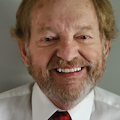Because this information is intended explicitly for the erudition of dentists determined to excel, I’ll present the question boldly: What is the most crucial component of supreme dental achievement? Is it clinical excellence? Esthetic mastery? Internet and marketing prowess? Perhaps charm, good looks, and fresh breath? I doubt any one response is categorically correct, but after practicing for 40 rewarding years, let me state my answer unequivocally: Inordinate success is contingent upon a practice’s ability to establish high-trust, low-fear relationships with patients who then accept and value recommended care, pay promptly, and refer enthusiastically. The more expeditiously and intensely these bonds can be formed, the more substantial the triumph. If you find credence in my assertion, let’s consider how one can best attain this desired end.
These essential relationships begin when patients schedule examinations. I trusted my outstanding staff as I hired, trained, and remunerated them, but we were a busy office, and my teammates were frequently already doing three things at once when a call requesting an appointment arrived. This initial interface is too vital to risk being anything less than superlative, so I called every new patient on the evening of the day they scheduled an examination.
Post-op calls made at day’s end to everyone I injected usually required only a moment. (“Hey, Bud, you doing okay?” “Great, Doc. Thanks for checking.”) But new patient introductions necessitated a more extended conversation. After introducing myself, I’d express thanks for the faith they’d already exhibited by scheduling an appointment, then ask if they had any questions. This unexpected contact dumbfounded most folks, so the first response was often a stuttered “No.” Since my primary objective was relationship building, I carried the conversation for a few ice-breaking minutes. I was frequently informed of anxiety issues related to a previous “bad experience” or advised of other roadblocks to care, such as fear of being judged and criticized. These revelations provided me with an opportunity to explain why such an atrocity wouldn’t happen in our caring and committed dental home where, for example, we assured patient comfort by using topicals, featherlight injections, nitrous oxide, and conscious sedation.
These calls alone made quite an impression, as “no doctor has ever taken the time to do this before.” The relationships engendered reduced our 40-minute new-patient exam failure rate, previously our most commonly missed appointment by far, to virtually nothing.
Dentists can’t excel by doing everything just as everyone else does. This is merely one example of the additional effort extraordinary outcomes demand. While many long for success, few are willing to earn it.
Common ground
It’s natural to experience some anxiety when meeting a stranger, and this stress magnifies when entering the foreign and potentially ominous dental environment. But this apprehension is our enemy, so let’s analyze how dentists can overcome negative feelings to nurture and enhance this inchoate relationship during a patient’s vital first visit.
When the newest member of our dental family arrives, she is greeted with a warm smile and by name. (Identity is apparent when someone of the correct gender and age arrives at our new patient’s appointed time.) She is helped through obligatory paperwork, then escorted to the quiet comfort of my private office. (Not seated in a menacingly strange chair with drills dangling in her face.) If I wasn’t present, a staff member kept her company, then introduced me as “Dr. John” when I arrived.
For the first few minutes, we chat as I search for common ground. People tend to associate with folks similar to themselves. Knowing who recommended us affords me insight, so I state, “Nothing is more flattering than a patient entrusting family or friends to our care. Who may I thank for referring you to our office?” I note the name, and a handwritten thank-you with a small gift, such as movie passes or car wash tokens, is sent. If you wish behavior repeated, reward it.
Mirroring
We then discuss their children, activities, favorite sports teams, and much more, as commonality helps form relationships. I follow this general conversation with a standard set of questions concerning past and current dental health. (“Do you or have you had oral pain? Bleeding gums? Frequent headaches?” etc.) During this interview, I speak as little as possible, posing questions, nodding acknowledgment, and listening as I take notes. I also start mirroring.
As elucidated by neuro-linguistic programming (NLP), this behavior has been available since the 1970s, so it’s past time dentistry took advantage of its unique wisdom. NLP claims many additional benefits besides enhanced communication, including treating depression, anxiety, phobias, and low self-esteem.1 None of these are relevant to our discussion.
I begin mirroring by emulating my patient’s posture. If she is seated erectly, I position myself likewise. I adopt a comfortable slouch if that’s what my patient prefers. I also pay attention to the rhythm and rapidity of speech. If she talks slowly, so … do … I. If his dialogue is quick and concise, so is mine. While I won’t repeat poor grammar or vulgarity, I am happy to contribute a little slang.
But these are superficial behaviors. The key to establishing trust in two minutes is developing an awareness of more subtle clues. People primarily relate to the world either through their sense of vision (60% visuals), hearing (20% auditories), or touch (20% kinesthetics). Each type provides multiple clues to informed observers, some as evident as visuals habitually responding, “I see,” auditories commenting, “I hear you,” or a kinesthetics remarking, “I feel you.”
An additional identification aid is eye positioning. Asking a question reveals that while accessing information, visuals’ focus shifts up and out, auditories peer straight ahead, while kinesthetics glance downward.
Also, visuals speak rapidly, auditories more slowly, and kinesthetics’ speech can be maddingly deliberate to rapid-speaking visuals like myself. (But patience is mandated. Attempts to hurry the conversation will prove untoward to my slow-talking friends.)
Without their conscious awareness, copying someone’s posture, speech rhythms, patterns, and grammar creates a feeling of being understood and accepted. Having all team members become skilled in this art amplifies its effectiveness.
Let’s assume my hypothetical new patient is a 37-year-old executive and mother of two. Her posture is impeccable, her speech rapid, clipped, precise. Having the splendid fortune to discover our children attend the same school and play soccer establishes a firm relationship foundation. When I ask how long since her last dental visit, her eyes shift up and out, as she recalls. Her commenting, “I see,” several times confirms a visual orientation. So, I’m sitting erect, replying, “I see,” and employing the rapid-fire machine gun pace of speech I prefer.
Her husband’s examination is next, and the soccer information creates instant affinity. He is almost lying in the chair, so with a pleased sigh, I slump. When I inquire about his most recent dental visit, his eyes peer straight ahead, and it takes him a while to confess, “About three years ago.” Dealing with one of auditory persuasion, I slow my speech and respond, “I hear you.”
Is this cheating, manipulating, or phony? Not in the slightest. The key is focused attention, which is helpful anytime precise communication and mutual understanding are essential. Employing this modality indicates that one is dedicated enough to make the extra effort to relate most successfully, thus maximizing listening and speaking effectiveness. Reflect on a time when you met multiple new people. Perhaps they all seemed lovely, but there was one person you especially liked. You know, he seemed a lot like you.
“Hey! This NLP nonsense seems like a lot of bother. Are trustful relationships that important? I mean, it’s not date night. They just want their teeth fixed, right?”
The confidence formed through NLP methods engenders affection and loyalty, which is essential to case acceptance, and also results in patients showing up on time, paying promptly, and referring often. But a tremendous additional benefit is that such intense concentration elevates one from self-focus to being powerfully present for others. Fixing teeth can become jejune, but people never do. By observing intently, one can perceive each person to be unique and worthy of an in-depth relationship. You like them, and imagine the joy of treating only friends.
Dentistry, always challenging for me, can be a lonely and humbling profession, but shifting focus away from self also deepens relations with staff, allowing an authentic team with shared values and goals to blossom. Such mutual support is vital if one hopes to find pleasure in a demanding job, and I contend that whatever empowers one to enjoy one’s life’s work is worth virtually any effort.
Editor's note: This article was originally published in 2022 but has been updated as of June 2025.
Author's note: For further reading on NLP, I recommend these books:
- Frogs into Princes by Richard Bandler and John Grinder
- Trance-Formation by Richard Bandler
Reference
- Neuro-linguistic programming therapy. Psychology Today. https://www.psychologytoday.com/us/therapy-types/neuro-linguistic-programming-therapy
About the Author

John A. Wilde, DDS
After eight years of higher education, paying 100% of the cost himself, John A. Wilde, DDS, spent two years in the Army Dental Corps before beginning a practice from scratch in Keokuk, Iowa. By age 30, he was debt-free, owning outright his new country home and the practice he had designed and built. By 40, he was financially able to retire. At age 53, he fully retired. Dr. Wilde has authored six books and more than 220 articles, and may be reached at (309) 333-2865 or [email protected].
